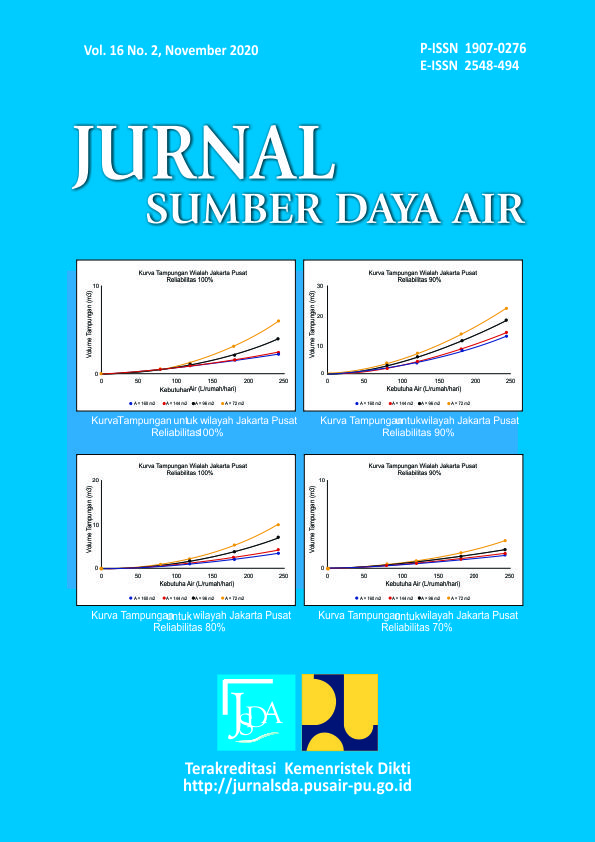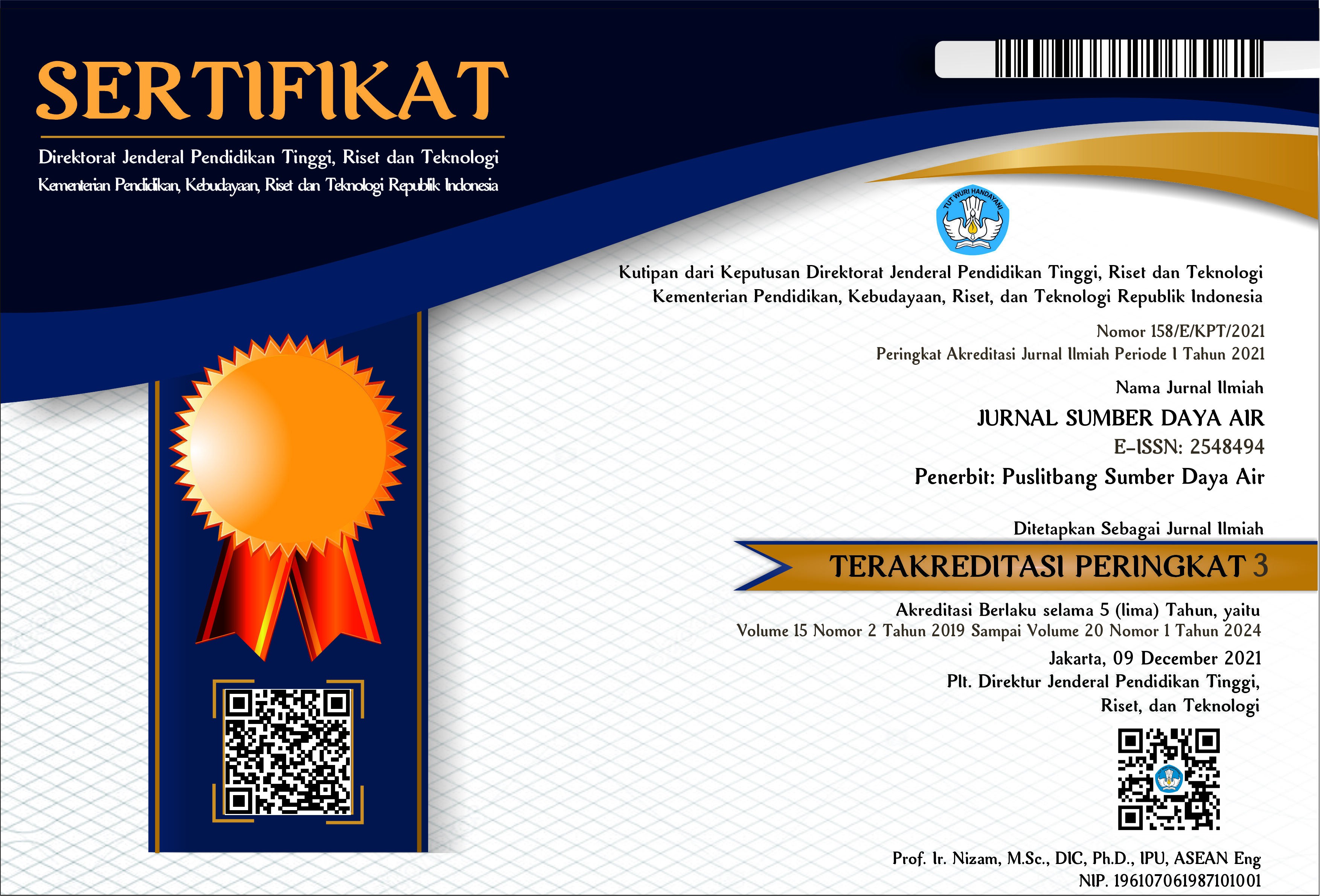RESTORASI LAHAN RAWA GAMBUT MELALUI METODE REWETTING DAN PALUDIKULTUR
DOI:
https://doi.org/10.32679/jsda.v16i2.677Abstrak
Degradasi di lahan rawa gambut umumnya diakibatkan oleh alih fungsi lahan dan pemilihan komoditas yang tidak tepat. Alih fungsi lahan yang disertai dengan pembuatan drainase tanpa perencanaan yang matang menyebabkan lahan menjadi kering, mudah terbakar, subsiden, banjir, emisi CO2 dan permasalahan sosial-ekonomi.
Penelitian ini dilakukan melalui studi literatur terkait persoalan dan solusi pemulihan lahan gambut terdegradasi melalui restorasi hidrologi dengan metode rewetting (sekat/canal blocking) dan penanaman jenis tanaman yang tidak membutuhkan drainase (paludikultur).
Terdapat empat tipe sekat yang biasa digunakan, Â yaitu sekat papan, sekat isi, sekat plastik, dan sekat geser. Pemilihan tipe sekat sangat tergantung kepada kondisi bio-fisik, dimensi kanal, topografi gambut, ketersediaan material dan aksesibilitas ke lokasi penabatan. Dari penelitian ini diketahui adanya korelasi yang kuat antara keberadaan sekat terhadap penambahan ketinggian muka air tanah, dimana sekat bermanfaat untuk menaikkan muka air tanah dan melembabkan tanah.
Selanjutnya, dalam penerapan paludikultur, diketahui bahwa komoditas tertentu lebih tahan terhadap genangan namun tetap memiliki nilai ekonomi seperti: Metroxylon spp, Nypa fruticans Wurmb, Alseodaphne spp. dan Nothaphoebe spp., dan Shorea spp. Agar dapat bertahan hidup jenis-jenis tanaman tersebut harus dipilih dan disesuaikan dengan ketinggian air yang terdapat di lahan gambut.Â
Kata kunci: Gambut, paludikultur, sekat kanal, restorasi, muka air tanah
In general, degradation on peatlands is mainly caused by excessive conversion and selection of commodities that cannot grow in wet condition. Conversion of peatlands and extreme canalization have become major threats to peatlands which leads to peat fire, subsidence, flooding, green house emission, as well as economic and social problems.
This study was obtained from literature study on current problems and solutions of degraded peatlands through peatland hydrology restoration by rewetting method (canal blocking) and cultivation of species that do not require drainage.
There are four types of dams that are often used to control water flows, plank dam, composite dam, plastic dam, and sluice. The selection of dam is highly dependent on bio-physical condition, dimensions of canals, peat-topography, availability and accessibility of transportation to the dam site. This research shows that there is strong correlation between canal blocking and the increasing of ground water level, where canal blocking is useful for raising the water table and moisturizing the soil.
In the implementation of paludiculture, the certain species / commodities can survive  to wet condition, and also have economic value such as: Metroxylon spp, Nypa fruticans Wurmb, Alseodaphne spp. dan Nothaphoebe spp), dan Shorea spp. In order to survive the type of plants has to be selected and adjusted to the condition of peatlands water level.
Keywords : Peatlands, paludikultur, canal blocking, restoration, ground water level
Unduhan
Diterbitkan
Cara Mengutip
Terbitan
Bagian
Lisensi
The Authors submitting a manuscript do so on the understanding that if accepted for publication, copyright of the article shall be assigned to Jurnal Sumber Daya Air and Pusat Penelitian dan Pengembangan Sumber Daya Air as publisher of the journal.Copyright encompasses exclusive rights to reproduce and deliver the article in all form and media, including reprints, photographs, microfilms and any other similar reproductions, as well as translations. The reproduction of any part of this journal, its storage in databases and its transmission by any form or media, such as electronic, electrostatic and mechanical copies, photocopies, recordings, magnetic media, etc. , will be allowed only with a written permission from Jurnal Sumber Daya Air and Pusat Penelitian dan Pengembangan Sumber Daya Air.
Jurnal Sumber Daya Air and Pusat Penelitian dan Pengembangan Sumber Daya Air, the Editors and the Advisory International Editorial Board make every effort to ensure that no wrong or misleading data, opinions or statements be published in the journal.




















